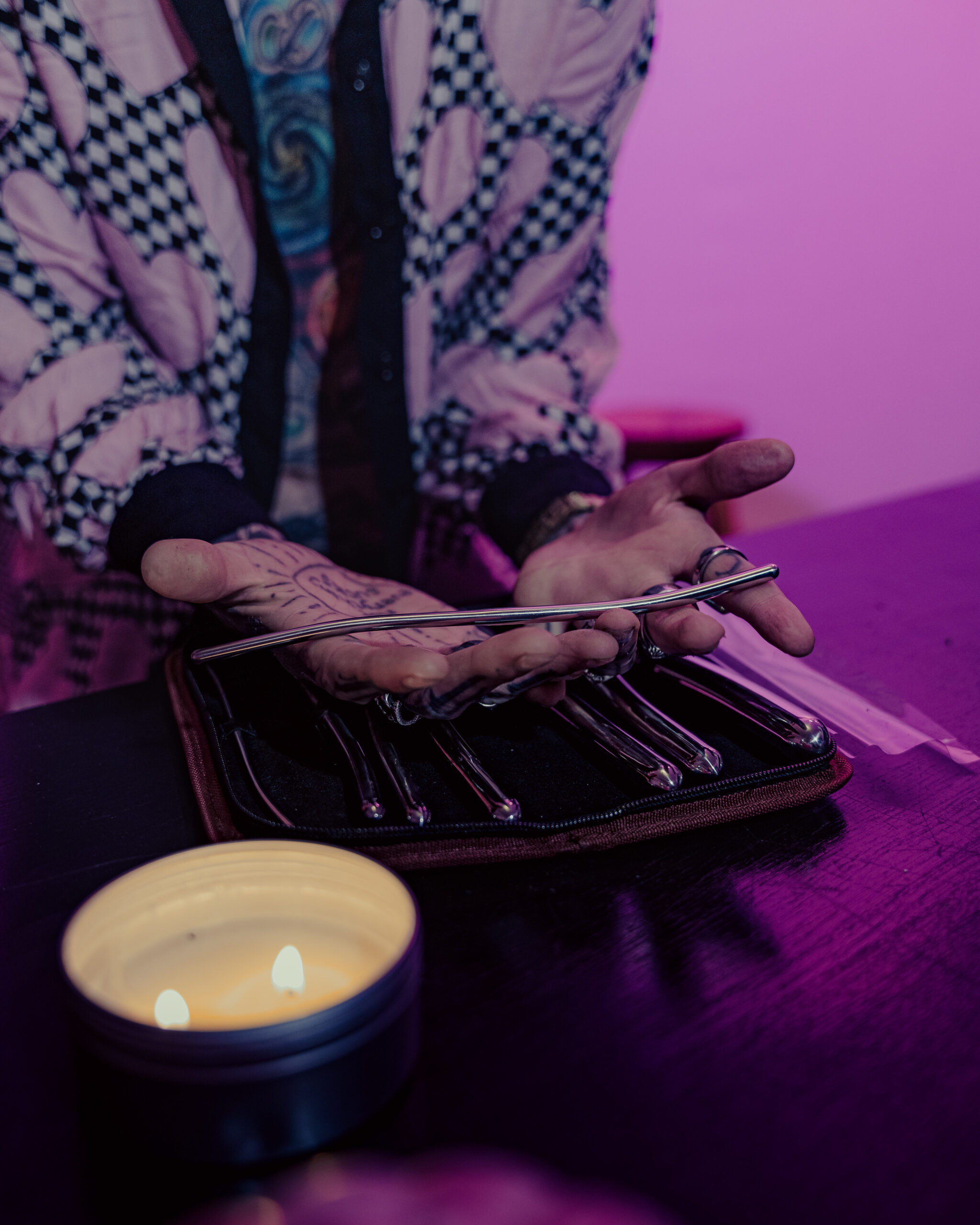Understanding Intersectionality
Understanding intersectionality is crucial when navigating romantic contexts. Intersectionality recognizes that individuals hold multiple, overlapping identities—such as race, gender, sexual orientation, and class—which intersect and influence their experiences. These intersecting identities shape how individuals perceive themselves, relate to others, and encounter the world, including within romantic relationships.
Defining Intersectional Identities
Intersectional identities encompass the complex interplay of various social categories that define an individual. These categories can include race, gender, sexual orientation, class, religion, ability, and many others. It’s important to recognize that these identities are not separate or Goldfinger LA compartmentalized but rather interwoven, creating a unique and multifaceted experience for each person.
Recognizing Multiple Layers of Identity
For instance, a Black woman’s experience in a romantic relationship will be shaped differently than a white woman’s, even if they share similar backgrounds. Their races intersect with their genders, influencing their expectations, challenges, and communication styles within the relationship. Understanding these intersections allows for more empathetic and nuanced interactions.
Furthermore, intersectionality encourages individuals to examine how societal power dynamics play a role in shaping romantic experiences. Recognizing that certain identities are privileged while others face discrimination is crucial for building equitable and respectful relationships.
Challenges in Romantic Contexts
Romantic relationships are inherently complex, but the presence of intersecting identities adds another layer of nuance. Navigating these complexities requires a deeper understanding of how social categories like race, gender, sexual orientation, and class interact to shape individual experiences and expectations within relationships.
Limited Representation and Stereotypes
One significant challenge in navigating intersectional identities in romantic contexts is limited representation and stereotypes in language and media.
- These limited portrayals can create unrealistic expectations about what a relationship “should” look like, especially for individuals from marginalized groups.
- Stereotypes can also lead to misunderstandings and prejudice, making it harder to build genuine connections.
- The lack of diverse representation can make individuals feel isolated or invisible within the dating pool.
Navigating Power Dynamics
Another challenge is the potential for internalized oppression. Individuals from marginalized groups may unconsciously adopt negative beliefs or attitudes about themselves based on societal stereotypes and discrimination. This internalization can manifest in self-doubt, insecurity, and difficulty forming healthy relationships.
Moreover, navigating power dynamics within a relationship requires ongoing awareness and communication. Differences in race, gender, sexual orientation, or class can create imbalances of power that need to be acknowledged and addressed. Openly discussing these dynamics and establishing boundaries is crucial for fostering equality and mutual respect.
Finally, individuals from marginalized backgrounds may face unique challenges related to family acceptance and societal pressures. Coming out as LGBTQ+, for example, can lead to rejection or disapproval from family members, which can create conflict and tension within a romantic relationship.
Communicating Needs and Expectations
Communicating needs and expectations clearly is fundamental in any romantic relationship, but it becomes even more crucial when navigating intersecting identities.
Individuals from marginalized groups may have unique needs and expectations shaped by their experiences with societal discrimination or limited representation. Open and honest communication about these needs can help partners understand and support each other better. For example, a partner who is chronically underrepresented in media might need reassurance and validation regarding their identity within the relationship.
Additionally, it’s important to be mindful of language and avoid using terms that may be offensive or perpetuate stereotypes. Being conscious of one’s own biases and actively working to unlearn them can create a safer and more inclusive space for communication.
Establishing clear boundaries is also essential. These boundaries can relate to topics like cultural traditions, family involvement, and personal values. Articulating these boundaries respectfully allows partners to understand each other’s limits and ensures that both individuals feel respected and valued within the relationship.
Building Inclusive Relationships
Building inclusive relationships requires a conscious effort to understand and embrace the diverse experiences of all involved.
Open Communication and Active Listening
Open communication and active listening are cornerstones of building inclusive relationships, especially when navigating the complexities of intersectional identities. It means creating a safe space where partners feel comfortable sharing their thoughts, feelings, and needs without fear of judgment or dismissal.
Active listening involves truly paying attention to what your partner is saying, both verbally and nonverbally. It means making an effort to understand their perspective, even if it differs from your own. It also involves asking clarifying questions to ensure you fully grasp their message and reflecting back what you hear to demonstrate that you are engaged and understanding.
Building inclusive relationships also requires being willing to learn about your partner’s experiences and perspectives. This may involve reading books or articles about their culture, identity, or background. It can also mean having open and honest conversations about topics like privilege, discrimination, and power dynamics.
Empathy and Respect for Differences

Empathy is crucial for building inclusive relationships. It involves understanding and sharing the feelings of others, particularly those from different backgrounds and experiences. When you empathize with your partner, you demonstrate that you value their perspective and are willing to see the world through their eyes.
Respect for differences is another essential element. This means appreciating that each individual is unique and has a different set of values, beliefs, and experiences. It also involves being open-minded and accepting of those differences, even if they challenge your own worldview.
Practicing active listening is key to cultivating empathy and respect. Pay attention not only to what your partner says but also to their nonverbal cues. Ask clarifying questions to ensure understanding and reflect back what you hear to demonstrate that you are engaged and present.
Be willing to learn about your partner’s culture, background, and experiences. This demonstrates a genuine interest in them as a person and helps you to better understand their perspective.
Finally, remember that building inclusive relationships is an ongoing process. It requires continuous effort, self-reflection, and a willingness to grow and learn.
Setting Boundaries and Assertiveness
Building inclusive romantic relationships starts with understanding the power of intersectionality—recognizing how various identities like race, gender, sexual orientation, and class intersect to shape individual experiences. This awareness allows for empathy and nuanced interactions, recognizing that a Black woman’s experience in love will differ from a white woman’s even if they share similar backgrounds.

Navigating these complexities requires challenging limited representations of relationships in media and language. These portrayals can set unrealistic expectations and perpetuate stereotypes, making it harder to connect authentically. It’s crucial to be mindful of internalized oppression, recognizing that societal biases can negatively impact self-perception and relationship dynamics. Individuals from marginalized groups may unknowingly adopt negative beliefs about themselves due to societal messages.
Open communication is paramount in inclusive relationships, especially when navigating intersectional identities. Partners should clearly express their needs and expectations shaped by their unique experiences. This creates a safe space for vulnerability and understanding. Active listening is vital – truly paying attention to what your partner says and demonstrating that you are engaged and trying to understand their perspective.
Setting clear boundaries is essential for respectful relationships, particularly when differences in cultural traditions, family involvement, or personal values exist. Articulating these boundaries respectfully ensures that both individuals feel valued and respected within the relationship.
Building inclusive relationships requires a conscious effort to embrace diversity and understand individual experiences. It’s about creating a space where partners feel comfortable being themselves, sharing their perspectives, and learning from each other.
Finding Community and Support
Finding community and support is crucial for individuals navigating the complexities of intersectional identities in romantic contexts. Sharing experiences with others who understand the unique challenges and triumphs of living with multiple intersecting identities can provide invaluable validation, advice, and encouragement.
Connecting with Other Intersectional Individuals
Connecting with other individuals who share similar intersectional experiences can create a sense of belonging and understanding that is often difficult to find elsewhere. These communities can offer a safe space to discuss personal challenges, celebrate successes, and learn from one another’s perspectives.
There are numerous ways to find these supportive communities, both online and offline. Online platforms, such as social media groups or forums dedicated to specific intersectional identities, allow individuals to connect with like-minded people across geographical boundaries.
Attending local events or workshops hosted by organizations that focus on diversity and inclusion can also provide opportunities for in-person connections. Participating in advocacy groups or activist collectives centered around social justice issues can foster a sense of shared purpose and solidarity.
Finding community doesn’t mean abandoning existing support systems.
However, seeking out individuals who understand the nuances of your intersectional experience can provide an additional layer of support and validation that can be particularly helpful when navigating romantic relationships.
Seeking Guidance from Therapists or Counselors
Seeking guidance from therapists or counselors who are knowledgeable about intersectionality can be incredibly beneficial for individuals navigating the complexities of romantic relationships. Therapists who specialize in this area can offer a safe and supportive space to explore challenges, develop coping mechanisms, and build healthy relationship patterns.

A therapist specializing in intersectional identities can help you unpack how your various social categories influence your experiences, expectations, and communication styles within relationships. They can provide insights into the impact of societal norms, stereotypes, and power dynamics on your romantic life.
Additionally, a therapist can equip you with tools to navigate internalized oppression, challenge negative beliefs, and cultivate self-compassion. They can help you establish healthy boundaries, communicate your needs effectively, and address any relational issues that arise from intersecting identities.
Utilizing Online Resources and Support Groups
Finding community and support is crucial for individuals navigating the complexities of intersectional identities in romantic contexts. Sharing experiences with others who understand the unique challenges and triumphs of living with multiple intersecting identities can provide invaluable validation, advice, and encouragement. Connecting with other individuals who share similar intersectional experiences can create a sense of belonging and understanding that is often difficult to find elsewhere. These communities can offer a safe space to discuss personal challenges, celebrate successes, and learn from one another’s perspectives.
There are numerous ways to find these supportive communities, both online and offline. Online platforms, such as social media groups or forums dedicated to specific intersectional identities, allow individuals to connect with like-minded people across geographical boundaries. Attending local events or workshops hosted by organizations that focus on diversity and inclusion can also provide opportunities for in-person connections. Participating in advocacy groups or activist collectives centered around social justice issues can foster a sense of shared purpose and solidarity.
Finding community doesn’t mean abandoning existing support systems. However, seeking out individuals who understand the nuances of your intersectional experience can provide an additional layer of support and validation that can be particularly helpful when navigating romantic relationships.
Seeking guidance from therapists or counselors who are knowledgeable about intersectionality can be incredibly beneficial for individuals navigating the complexities of romantic relationships. Therapists who specialize in this area can offer a safe and supportive space to explore challenges, develop coping mechanisms, and build healthy relationship patterns.
the spiderman sex position
Gifted Brits
- How Kratom Gummies Compare To Traditional Kratom Powder - September 24, 2025
- Gummy Smile Treatment – Gum Contouring Near Holmwood, Surrey - September 23, 2025
- How To Support Someone Who Identifies As Demigender In Their Relationships - September 22, 2025
